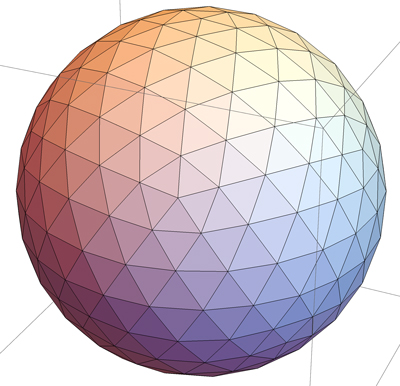I am creating a 3D computer simulation and I want to build a sphere from rays coming from the center of the sphere. Imagine a sphere consisting of all dots/particles at the end of the rays.
The dots at the end should all cover about the same area (errors are acceptable if there is no perfect solution for this and the forms of the dots are not important).
I am not the best mathematician. In 2D I would just divide my circle's 360 degrees into N angles and it would be done. But I need it to be a 3D sphere.
So how can I find out all (almost?) equally divided spherical angles which are all n degrees apart in all directions?
Edit: I forgot to mention that I want to put small 3D objects at the end of every point on the 'dots' at the end of the lines. Those 3D objects should be oriented correctly so they fit on the line. If the solution doesn't give me exact angles, how do I calculate the rotation matrix for these objects?

